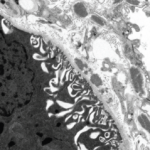The Results
At week 52, 114 patients (13.9%) achieved LLDAS. Of these 114 patients, 102 (89.5%) were also BICLA responders. This analysis also included patients in the TULIP-1 trial who received 150 mg of anifrolumab, as well as a group of patients who received 300 mg of anifrolumab. Of the BICLA responders, 102 of 318 (32%) achieved LLDAS at week 52. More patients achieved LLDAS as the 52-week trial continued, and LLDAS was achieved earlier in the trial by patients treated with 300 mg of anifrolumab than by those treated with placebo.
Also at week 52, 17.5% of patients who received anifrolumab and 10.6% of patients who received placebo achieved LLDAS. Patients who received anifrolumab had more cumulative time (P<0.001) and percentage of time (P<0.001) in LLDAS than patients who received placebo. The cumulative time in LLDAS thresholds of at least 20% (odds ratio [OR] 1.8, 95% confidence interval [CI] 1.2–2.7; P=0.004) and at least 50% (OR 1.9, 95% CI 1.0–3.4; P=0.035) also favored patients treated with anifrolumab.
Patients treated with anifrolumab were more likely to sustain LLDAS for at least three consecutive visits (18.6%) than patients who received placebo (12.5%). Additionally, they were more likely to sustain LLDAS for at least five consecutive visits (11.2%) or at least seven consecutive visits (6.8%) than patients who received placebo (7.7% and 2.7%, respectively).
This analysis of phase 3 clinical data of anifrolumab showed that LLDAS is an attainable treat-to-target end point in lupus clinical trials, and LLDAS is more stringent than BICLA. Treatment with anifrolumab led to earlier, and more frequent and sustained, LLDAS response.
Michele B. Kaufman, PharmD, BCGP, is a freelance medical writer based in New York City and a pharmacist at New York Presbyterian Lower Manhattan Hospital.
References
- Morand E, Abreu G, Furie R, et al. Attainment of the lupus low disease activity state in response to anifrolumab in 2 phase 3 trials [abstract 1459]. Arthritis Rheumatol. 2021 Oct; 73 (suppl 10).
- Efficacy and safety of two doses of anifrolumab compared to placebo in adult subjects with active systemic lupus erythematosus (TULIP-1; NCT02446912). ClinicalTrials.gov. 2019 Dec 5.
- Efficacy and safety of anifrolumab compared to placebo in adult subjects with active systemic lupus erythematosus (TULIP-2; NCT02446899). 2020 Apr 21.
- Highlights of prescribing information: Saphnelo (anifrolumab-fnia) product label. U.S. Food & Drug Administration. 2021 Jul 30.
- BLA approval letter: Saphnelo (anifrolumab-fnia). U.S. Food & Drug Administration. 2021 Jul 30.



